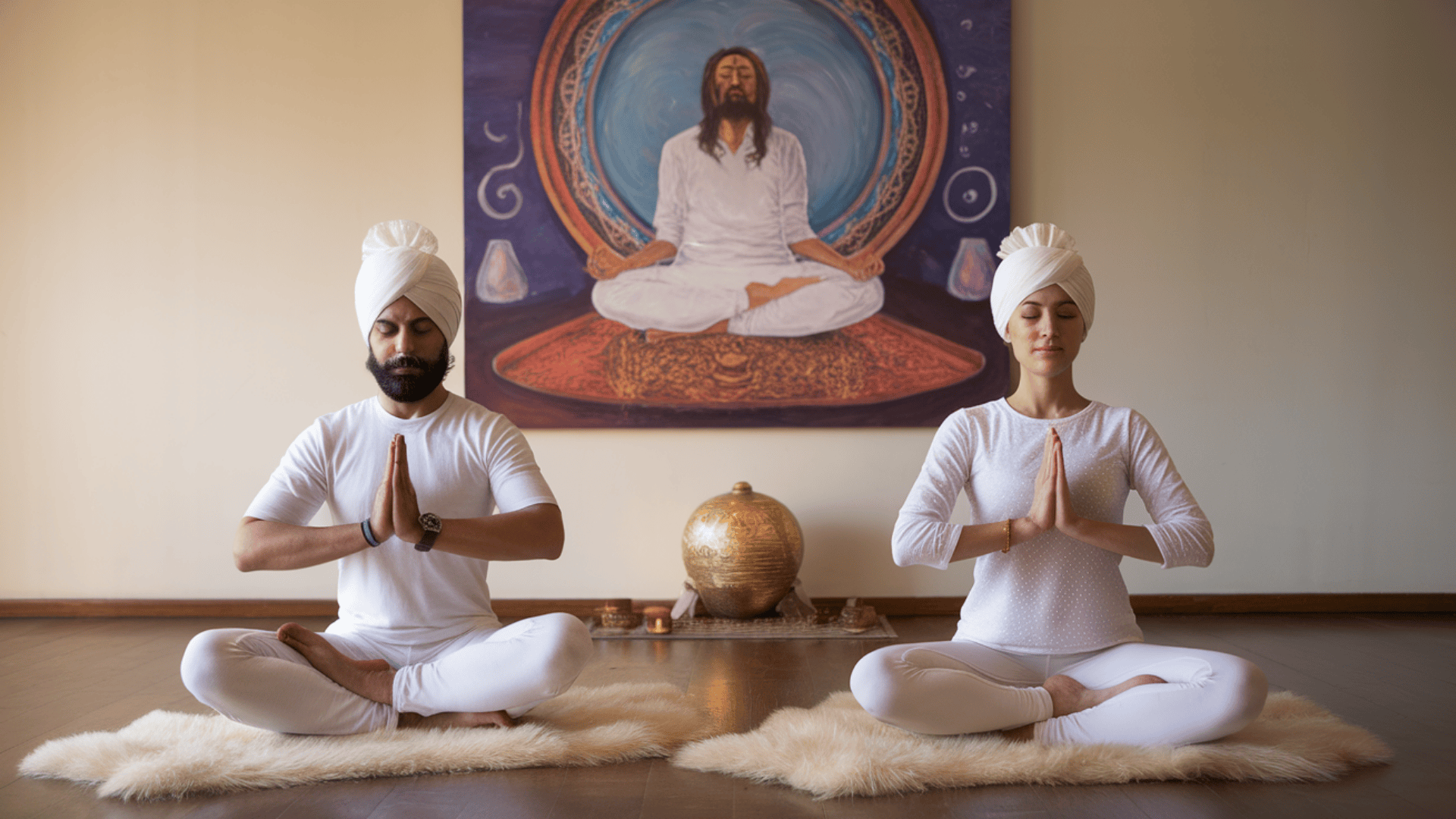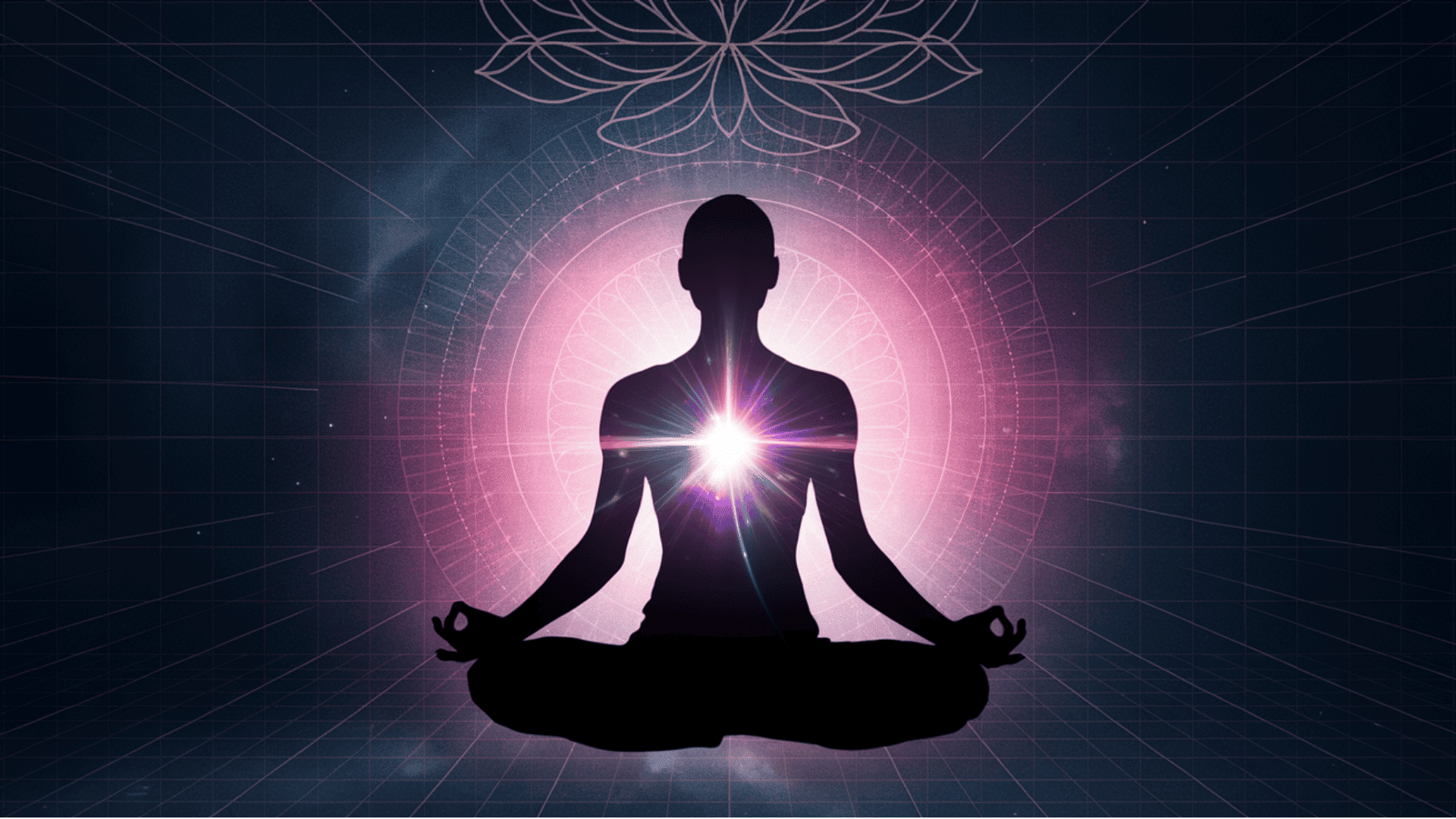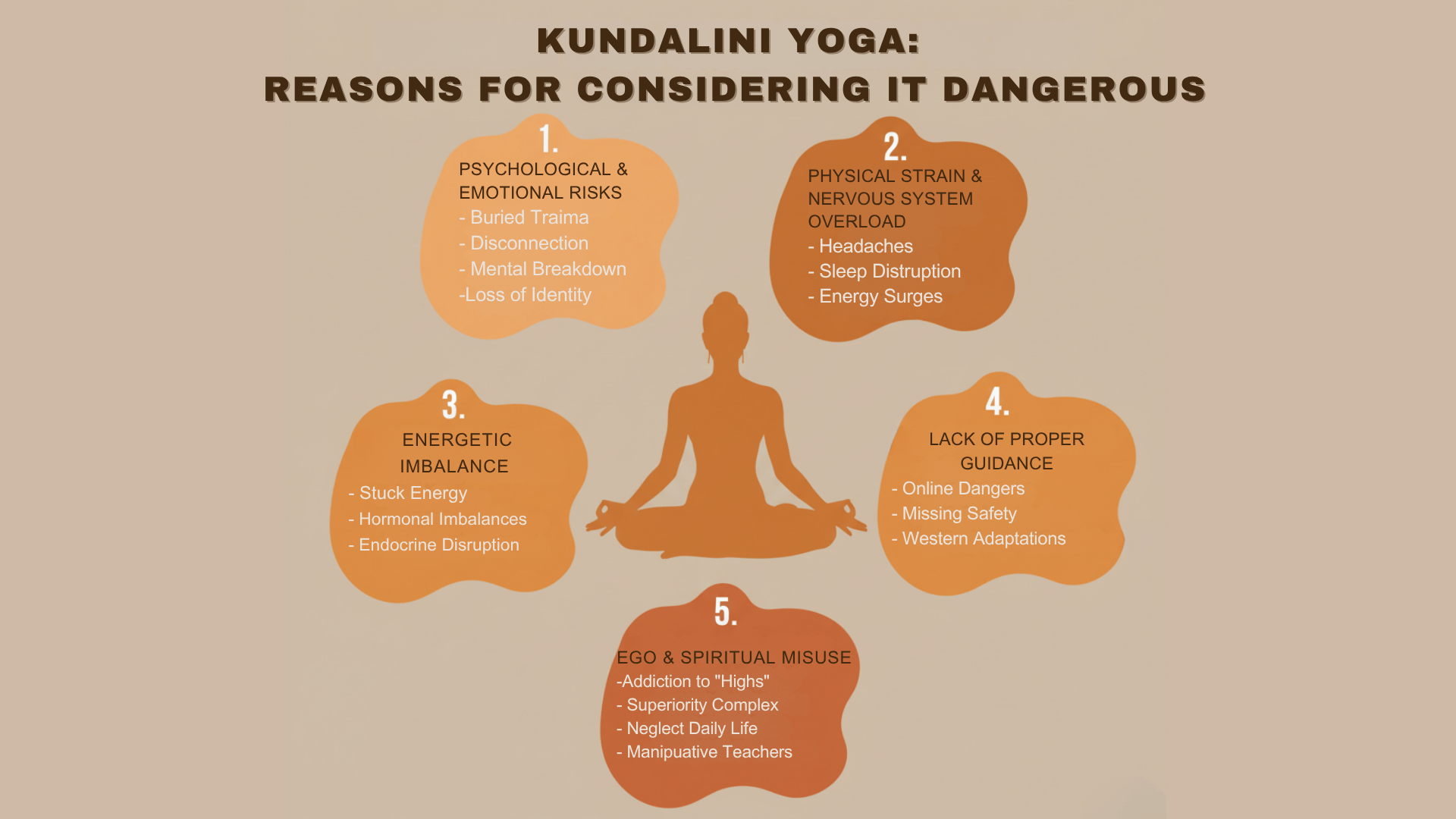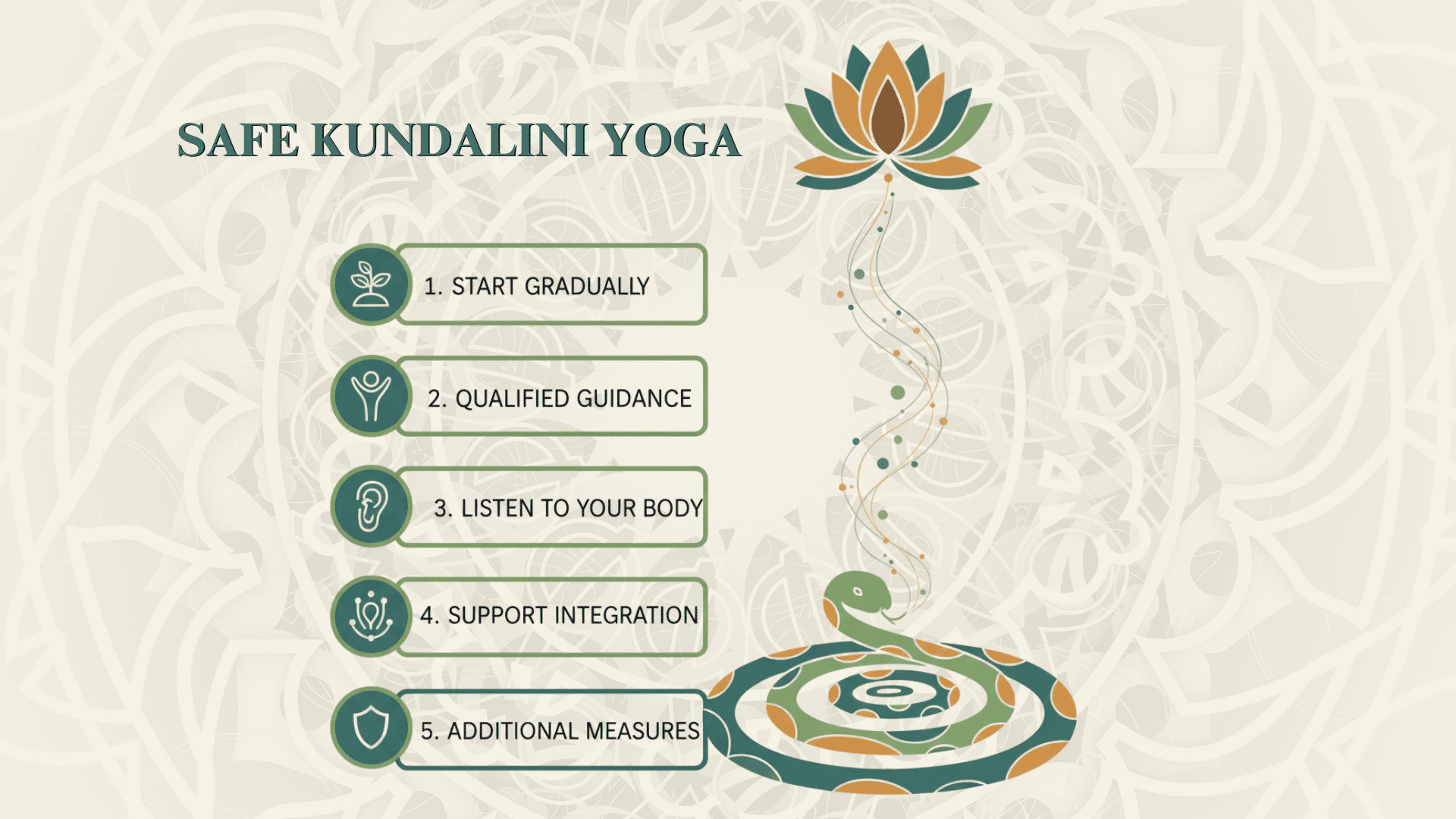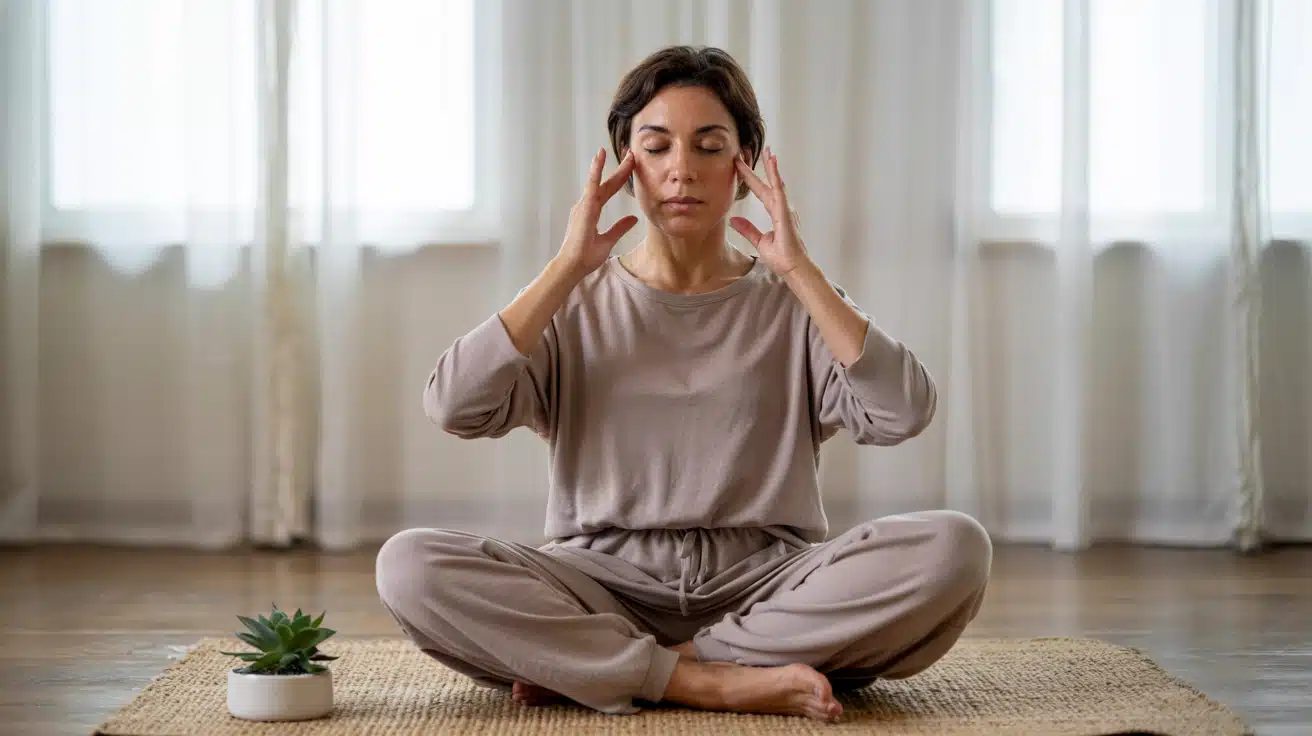Kundalini yoga is a form of yoga that attracts people seeking spiritual growth and deeper awareness.
But what many don’t realize is that improper practice can lead to severe psychological distress, physical exhaustion, and emotional chaos.
Stories of panic attacks, sleep disorders, and mental breakdowns aren’t rare in the kundalini community.
This post explains why kundalini yoga is sometimes considered dangerous.
You’ll learn about the specific risks, factors that increase your vulnerability, and practical safety measures if you decide to practice. You’ll also take a glance at the nature of this energy.
By the end, you’ll know exactly what warning signs to watch for.
What is Kundalini Yoga?
Kundalini yoga is an ancient practice that focuses on awakening dormant energy at the base of the spine. Think of it as waking up a sleeping force inside you.
The word “kundalini” means “coiled serpent” in Sanskrit. This energy sits at the base of your spine, waiting to be activated.
The practice combines breathwork, movement, chanting, and meditation. Each component works together to move energy upward through your body’s energy centers, called chakras.
Unlike other yoga styles that focus mainly on physical poses, kundalini yoga targets your energy system directly. Teachers often call it the “yoga of awareness” because it aims to expand consciousness quickly.
The goal is to raise this energy from your root chakra to your crown chakra. When successful, practitioners report feelings of bliss, clarity, and connection.
However, this rapid activation can be too much, too fast for many people.
The Nature of Kundalini Energy
Kundalini energy isn’t like regular physical energy you get from coffee or a good night’s sleep. It’s considered a primal, spiritual force that affects your entire system.
When activated, this energy moves through your spine like an electric current. Some describe it as:
- A tingling sensation moving upward
- Heat or cold waves through the body
- Vibrations or trembling
- Pressure at various points along the spine
- Intense emotional releases
Traditional texts warn that kundalini awakening should happen gradually over years, not weeks. The body and mind need time to adjust.
Your nervous system, in particular, needs preparation. Sudden activation can overwhelm your biological systems.
Think of it like upgrading electrical wiring in an old house. If you suddenly run too much power through outdated wiring, it can cause a short circuit. Your body works similarly.
The energy doesn’t just stay in your spine either. It affects your brain chemistry, hormone production, and emotional processing. All of these need careful management.
Main Reasons Kundalini Yoga Is Considered Dangerous
The dangers of kundalini yoga aren’t just theoretical warnings; they’re documented experiences from real practitioners. These risks help you make informed decisions about your practice.
Let’s look at the five major categories of concern.
1. Psychological and Emotional Risks
Kundalini practices can bring buried emotions flooding back without warning.
Traumas resurface with intense clarity, and you’re left dealing with pain you thought was behind you.
Many practitioners feel lost or disconnected from reality. Some experience what feels like a mental breakdown, losing their sense of identity completely.
Note: These psychological effects can last weeks or months. Professional mental health support often becomes necessary.
2. Physical Strain and Nervous System Overload
The breathing techniques can hyperactivate your nervous system beyond its comfort zone. Severe headaches appear, especially at the crown of your head.
Some feel crushing pressure in their chest or spine. Your sleep schedule might fall apart completely.
Heart palpitations occur randomly, and energy surges at night make sleep nearly impossible.
Note: These physical symptoms mirror serious medical conditions. Always get checked by a doctor first.
3. Energetic Imbalance and Premature Awakening
Energy may become stuck in one area, preventing it from flowing smoothly and creating an imbalance throughout your system.
Practitioners report hormonal imbalances following intense practice.
When your endocrine system gets disrupted, the effects ripple through your whole body in unpredictable ways.
Note: Energetic imbalances often require months of gentle practice to rebalance.
4. Lack of Proper Guidance
YouTube tutorials and online courses skip critical safety information. They promise fast results without explaining the consequences.
A qualified teacher recognizes warning signs you might miss and knows how to prevent serious complications.
Western adaptations strip away protective elements from the original practice, pushing people into experiences they’re not ready for.
Note: Finding a truly qualified teacher is harder than most people think.
5. Ego and Spiritual Misuse
Some practitioners become addicted to intense experiences, chasing bigger “highs” and more dramatic awakenings.
You might start feeling superior to others who haven’t “awakened.” Daily responsibilities often seem insignificant compared to spiritual experiences.
Vulnerable practitioners often fall prey to manipulative teachers who exploit spiritual seeking for personal gain.
Note: Spiritual experiences should improve your daily life, not replace it.
Risk-Increasing Factors for Kundalini Yoga
Certain conditions make kundalini practice especially risky. Understanding these factors helps you make informed choices.
- Pre-existing mental health conditions: Depression, anxiety disorders, bipolar disorder, or schizophrenia can worsen dramatically.
- Substance use or recent drug history: Creates unstable ground for practice. Your nervous system needs stability first. Mixing substances with intense energy compounds dangers.
- Rushed or intensive practice schedules: Your body needs rest between sessions. Back-to-back workshops or retreats often trigger problems.
- Practicing without medical clearance: Individuals with heart conditions, high blood pressure, or neurological disorders should be considered. Always consult healthcare providers first.
- Isolation from support systems: Practicing alone without the awareness of friends or family creates danger. You need people who can help if things go wrong.
- Ignoring warning signs: Pushing through discomfort often leads to bigger problems. Your intuition usually knows when something feels wrong.
How to Approach Kundalini Yoga Safely?
If you still want to explore kundalini yoga after understanding the risks, taking the right precautions makes all the difference. Safety isn’t optional when dealing with powerful energy practices.
1. Start Gradually and Build a Foundation
Rushing into advanced practices sets you up for failure. Your body and mind need time to adapt:
- Begin with gentle asanas and basic pranayama techniques
- Focus on grounding and stability first before attempting advanced practices
- Spend months on the basics before moving forward
- Build physical and mental resilience slowly over time
2. Practice Under Qualified Guidance
The right teacher makes all the difference between safe practice and potential harm:
- Choose an experienced, lineage-trained teacher with proper credentials
- Avoid “instant awakening” workshops or online challenges that promise quick results
- Verify your teacher’s background and training thoroughly
- Ask about their experience handling complications or adverse reactions
3. Listen to Your Body and Mind
Your body sends clear signals when something’s wrong. Pay attention and respond appropriately:
- Pause or modify practices when you feel overwhelmed
- Balance activation work with grounding techniques and rest periods
- Honor your limits without judgment or pushing through discomfort
- Take breaks between intensive practices so your system can adjust
4. Support Integration
Processing intense experiences requires proper support systems and healthy habits:
- Keep a journal of your experiences and any symptoms that arise
- Consider counseling or joining supportive communities with experienced practitioners
- Maintain a balanced lifestyle with proper nutrition, adequate sleep, and emotional health
- Ground yourself regularly through walking, eating, or connecting with nature
5. Additional Safety Measures
Beyond the basics, these extra precautions protect your well-being during practice:
- Don’t abandon your regular life routines; spiritual pursuits shouldn’t replace responsibilities or relationships
- Have a support network aware of your practice so they can help if needed
- Know when to stop completely if symptoms persist or worsen, and seek professional help
Kundalini Yoga vs Other Yoga
Knowing how kundalini yoga differs from other styles helps you make informed choices. Each yoga type serves different purposes and carries different risk levels.
| Aspect | Kundalini Yoga | Hatha/Vinyasa Yoga | Yin Yoga |
|---|---|---|---|
| Primary Focus | Energy awakening and spiritual transformation | Physical fitness and flexibility | Deep tissue release and relaxation |
| Intensity Level | High energetic intensity | Moderate to high physical intensity | Low intensity, passive holds |
| Practice Speed | Fast breathwork and movements | Flowing or steady-paced | Slow, held for minutes |
| Risk Level | Higher psychological and energetic risks | Lower risk, mainly physical injuries | Minimal risk, gentle approach |
| Preparation Needed | Extensive mental and spiritual readiness | Basic physical fitness | Beginner-friendly |
| Teacher Guidance | Essential for safety | Helpful but less critical | Optional for basics |
| Best For | Advanced practitioners seeking spiritual growth | General wellness and fitness | Stress relief and flexibility |
The key difference lies in intent and impact. Traditional yoga styles focus on physical health and mental calm. Kundalini yoga targets your energy system directly, which amplifies both benefits and risks.
If you’re new to yoga, starting with gentler styles builds the foundation you need before exploring more intense practices.
Conclusion
The dangers of Kundalini yoga are real and well-documented. From psychological breakdowns to physical exhaustion, the risks affect people differently. The fact is, however, that it shouldn’t be taken lightly.
If you’re drawn to this practice, start with traditional yoga styles first. Build your foundation slowly over months, not weeks.
Find a qualified teacher who understands both the benefits and the risks associated with the material. Most importantly, never ignore warning signs from your body or mind.
What’s your take on kundalini yoga? Drop your thoughts in the comments.

